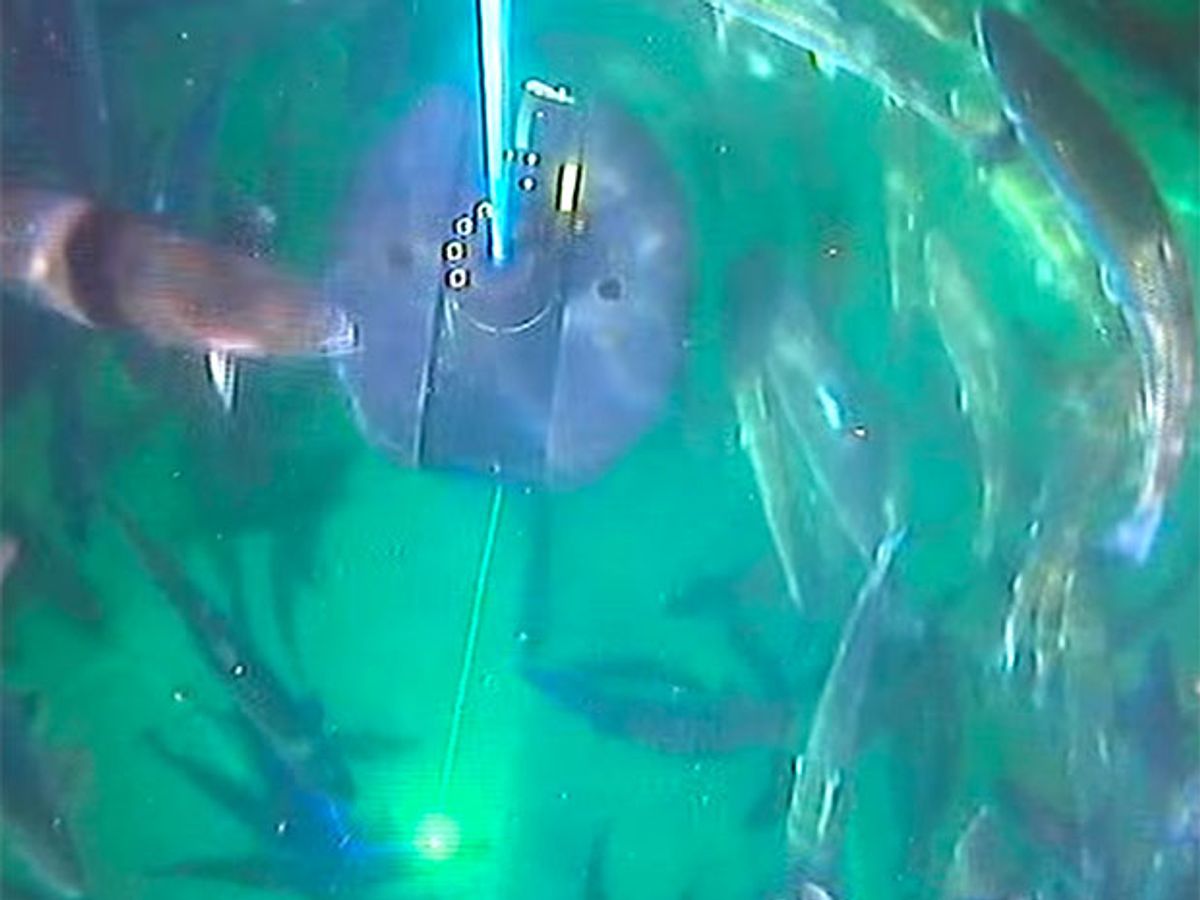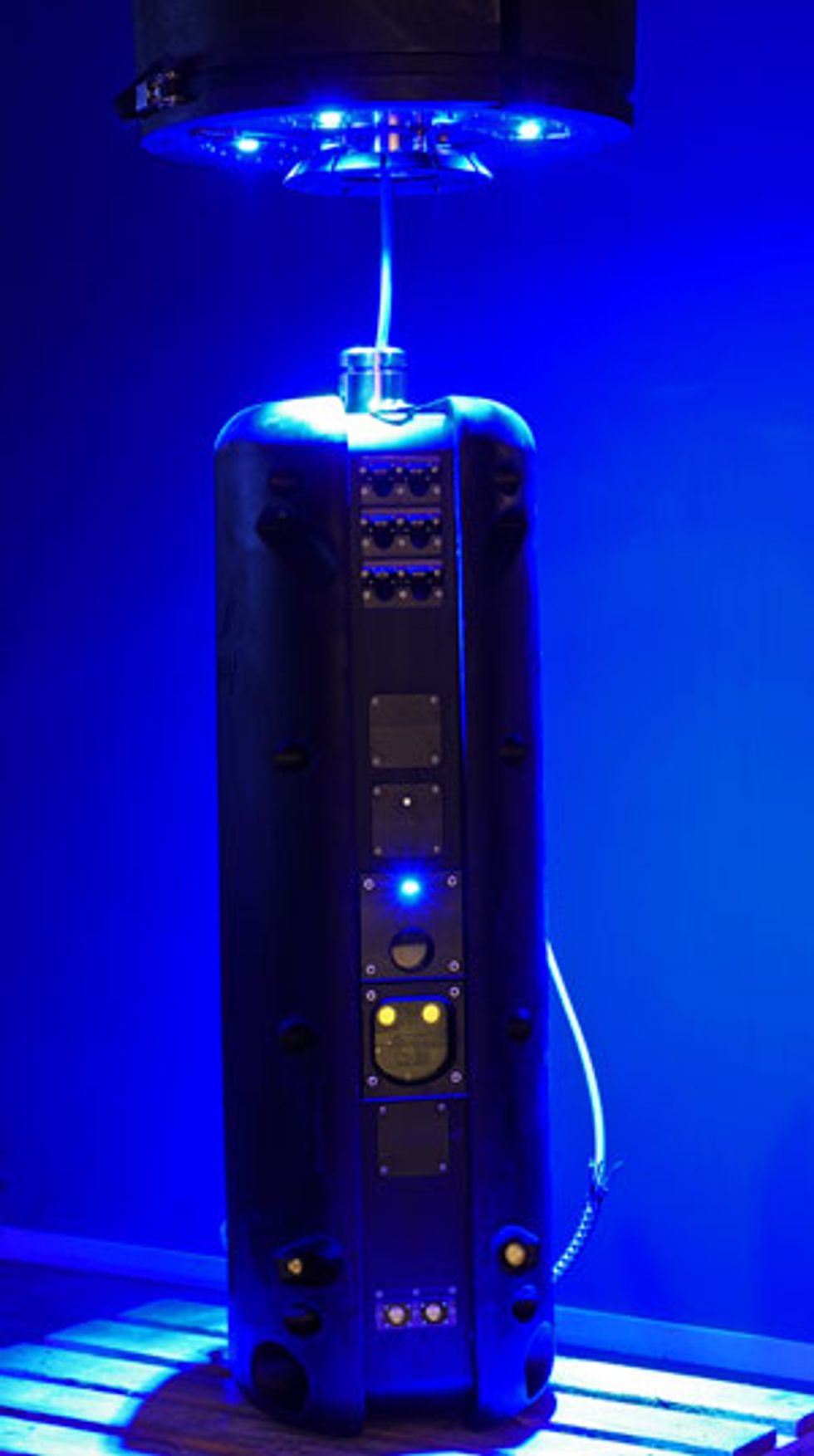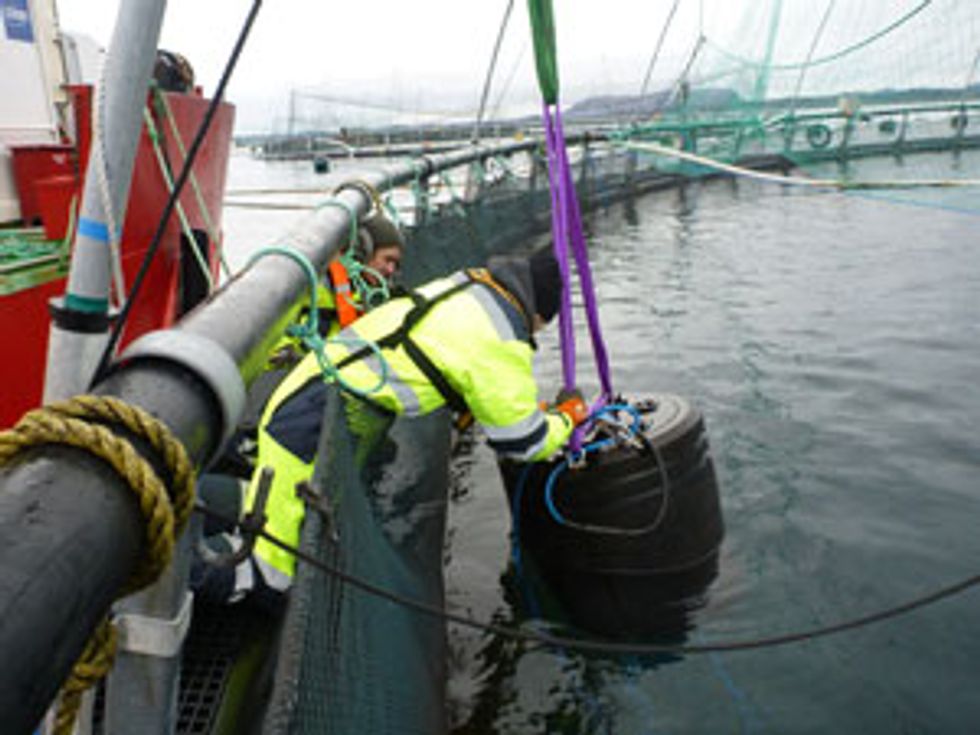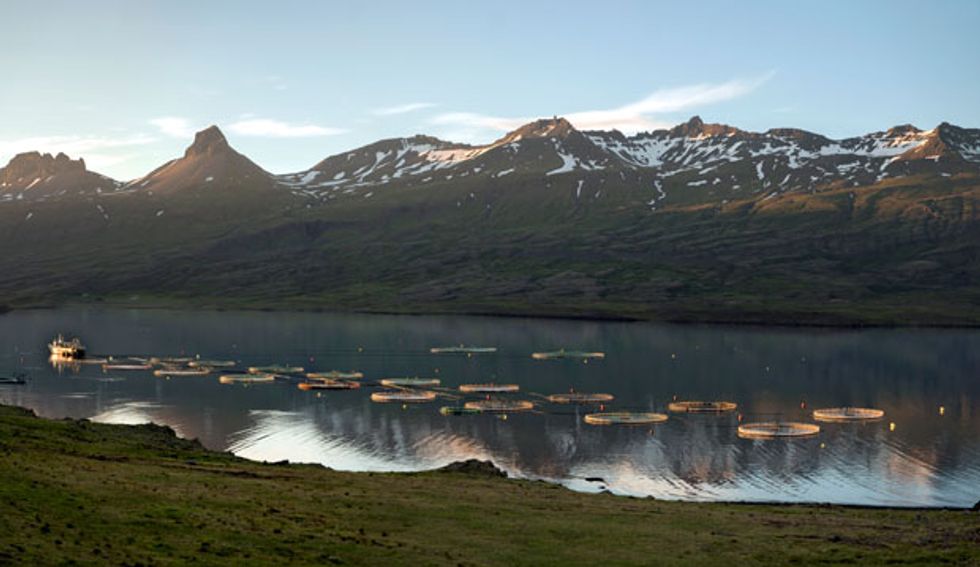
The pens holding cold-water fish in the fjords of Norway and quiet lochs of Scotland, whose depths are normally inky black after dark, now have an eerie night glow. There’s a perfectly rational explanation: Thousands of laser pulses are doing an important job, lighting up fish stocks in the latest bid to control a pesky parasite that can injure or even kill farmed salmon, and devastate an industry estimated to reel in about US $10 billion annually.
The problem is sea lice, marine ectoparasites. Two particular sea lice species, Lepeophtheirus salmonis and Caligus elongatus, attach to salmon and sea trout, feeding off their tissues, blood, and protective external mucus membranes. Though the lice find the flesh and blood of wild and farmed fish equally palatable, the problem is particularly acute in densely populated salmon farm pens, where the parasites’ food source are collected in a stationary place. Most pens typically keep 50,000 to 150,000 fish swimming inside a mesh perimeter. So, while the lice are a relatively harmless problem for fast and free-moving wild fish, the captive host in the pens find themselves unable to escape the louse onslaught.
The lice can easily cause injuries dire enough to make the fish unsuitable for bringing to market. As few as 11 lice can kill a smaller fish; a bigger group can leave an adult salmon wearing a grievous, bone-exposing “death crown.”
The latest of many attempts to rein in sea lice involves a software-and-camera-controlled underwater laser drone. Along with colleagues at his Oslo-based company, Beck Engineering, Esben Beck, a young Norwegian designer and engineer, developed the system that’s turning fish hatcheries into laser light shows. A couple of stereo cameras zero in on an individual louse attached to a fish in the pen; a thin laser beam shoots the bug, killing it but leaving the fish unharmed. This laser-beam killing machine, called the Stingray, is now being marketed by a Beck spin-off. According to the company, Stingray Marine Solutions, the device can lay waste to tens of thousands of lice each day.
Inside the Stingray’s watertight aluminum package (which is about the size of a boxer’s heavy punching bag) are a surgical diode laser of the sort used in dentistry, ophthalmology, and hair removal; a computer running image-matching software; small thrusters to move it through a pen; a winch for a buoy; and a 220-volt power source.
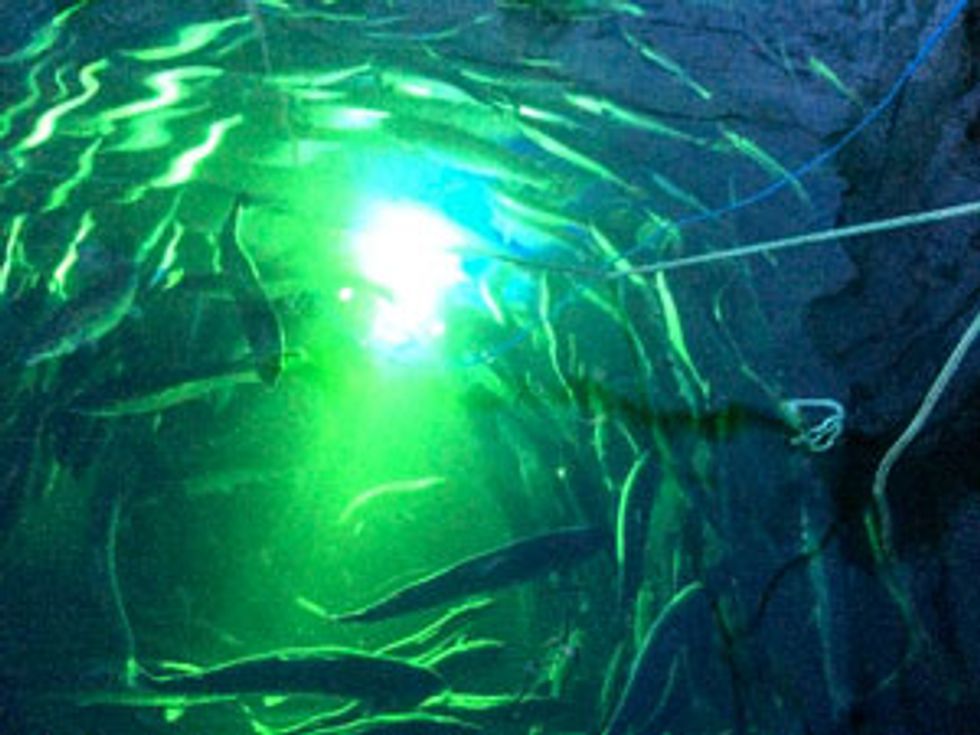
The software’s lice-identifying actions are akin to face matching on a mobile-phone camera, but faster. The software triggers the laser if it registers two matching frames confirming that the cameras are pointed at a louse. The resulting 530-nanometer-wavelength beam will not hurt a highly reflective fish scale, but it will turn a small, darkish-blue louse into a floating crisp at a distance of up to 2 meters.
The Stingray node is designed to be mostly autonomous. Its custom software can consider temperature, oxygen levels, and salinity when deciding where to position itself and when to fire laser pulses.
The idea of, um, shooting fish in a barrel has captured the attention of the farmed fish industry. Some of its biggest players—Lerøy Seafood Group, Marine Harvest, and SalMar—backed the project with a little under $2 million in seed funding. The Stingray node, first made available for sale in 2014, is now zapping lice at 100 salmon farms in Norway and was introduced in Scotland at the end of 2016.
The point, says John Breivik, Stingray Marine Solutions managing director, is to cut down on the use of other treatments, such as bringing all the salmon on board a boat to be washed with hot water, flushing them through strong currents to blast off the lice, or dousing them with chemicals such as hydrogen peroxide. These treatments can be effective but expensive, and each has drawbacks—and some have quite severe critics. Breivik’s claim is that two Stingray nodes have enough zapping power to decimate the lice population inside a single fish pen.
But Stingray’s backers are taking a wait-and-see approach. Harald Sveier, technical manager at Bergen, Norway–based Lerøy, which together with Marine Harvest represents half of the Norwegian salmon farming industry, says his company thinks the concept’s good and believes in it. With so much money at stake, though, Lerøy wants more documentation and hands-on proof.
The sea-louse issue is a nettlesome problem needing a solution. As the New York Post recently reported, lox prices may be headed up as a result of, among other concerns, the clouds of sea lice inflicting damage on fish. Salmon farming is controversial in some quarters, with experts and activists criticizing what they say is a self-inflicted problem. But given the world appetite, don’t be surprised if more farmers decide to use underwater lasers to help shoot their way out of the situation.
This article appears in the April 2017 print issue as “Lice-Hunting Underwater Drone Protects Salmon.”
About the Author
Michael Dumiak, a Berlin-based journalist who writes for Smithsonian Air & Space, Popular Science, and The Lancet, often feels he cannot afford salmon. In the January 2016 issue he wrote about Norway's pioneering move away from analog radio broadcasting.
This story was corrected on 31 March. It previously suggested that all Norwegian fjords were on the North Sea coast. Many are on the Norwegian Sea.
